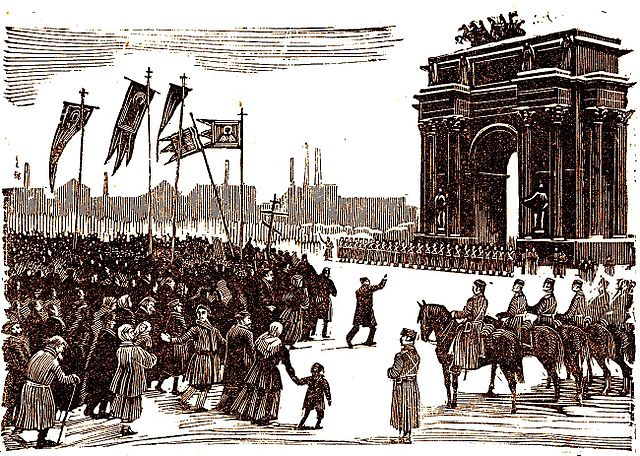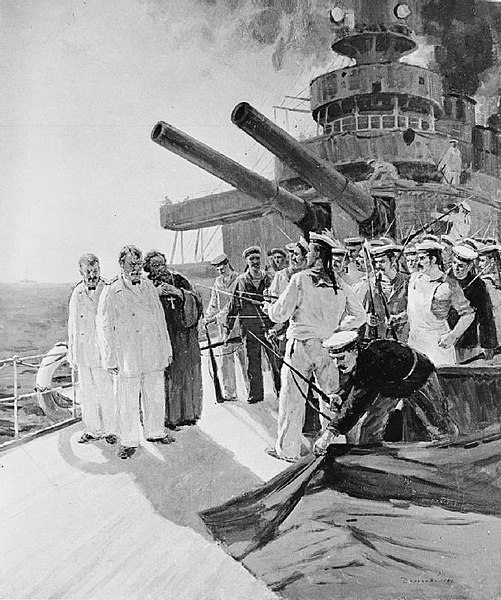Georgy Apollonovich Gapon was a Russian Orthodox priest and a popular working-class leader before the 1905 Russian Revolution. After he was discovered to be a police informant, Gapon was murdered by members of the Socialist Revolutionary Party. Father Gapon is mainly remembered as the leader of peaceful crowds of protesters on Bloody Sunday, when hundreds of them were killed by firing squads of the Imperial Russian Army.
Georgy Gapon
St. Petersburg Theological Academy, attended by Georgy Gapon, was one of four religious academies of the Russian Orthodox Church. The school was a training facility for theologians.
Gapon near Narva Gate
Russian Revolution of 1905
The Russian Revolution of 1905, also known as the First Russian Revolution, began on 22 January 1905. A wave of mass political and social unrest then began to spread across the vast areas of the Russian Empire. The unrest was directed primarily against the Tsar, the nobility, and the ruling class. It included worker strikes, peasant unrest, and military mutinies. In response to the public pressure, Tsar Nicholas II was forced to go back on his earlier authoritarian stance and enact some reform. This took the form of establishing the State Duma, the multi-party system, and the Russian Constitution of 1906. Despite popular participation in the Duma, the parliament was unable to issue laws of its own, and frequently came into conflict with Nicholas. The Duma's power was limited and Nicholas continued to hold the ruling authority. Furthermore, he could dissolve the Duma, which he did three times in order to get rid of the opposition.
Demonstrations before Bloody Sunday
Troops in St. Petersburg
Artistic impression of Bloody Sunday in St. Petersburg
Artistic impression of the mutiny by the crew of the battleship Potemkin against the ship's officers on 14 June 1905







